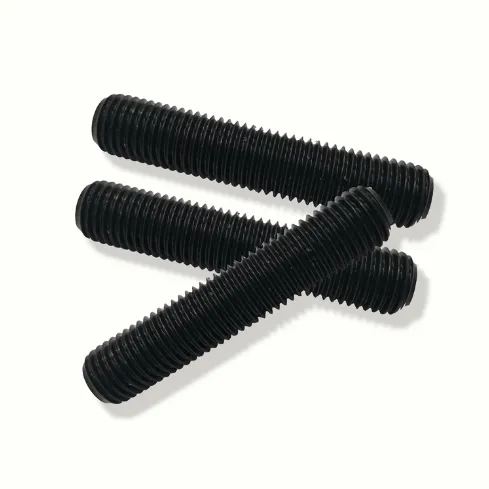B16 Stud Bolt Overview and Specifications for Industrial Applications
Dec . 05, 2024 12:34 Back to list
B16 Stud Bolt Overview and Specifications for Industrial Applications
Understanding Stud Bolt B16 A Comprehensive Overview
In the fast-paced world of industrial machinery and structural engineering, the role of fasteners cannot be overstated. Among the various types of fasteners, stud bolts are particularly vital, and the B16 specification has emerged as a standard that ensures quality and performance. This article delves into the characteristics, applications, and importance of stud bolts conforming to the B16 standard.
What are Stud Bolts?
Stud bolts are long, threaded fasteners that are used to connect two or more components. Unlike traditional bolts, stud bolts do not have a head; instead, they feature threads on both ends. This design allows them to be inserted into nuts on either side of the joint, creating a secure connection. Stud bolts are commonly used in high-pressure and high-temperature applications, making them essential in industries such as oil and gas, petrochemical, and power generation.
B16 Specification Explained
The B16 standard, set forth by the American Society of Mechanical Engineers (ASME), specifies the dimensions, tolerances, and mechanical properties for stud bolts. This standard ensures that stud bolts meet rigorous performance criteria, which are critical for maintaining the integrity of industrial systems. The B16 specification is essential for ensuring compatibility with flanges, valves, and various equipment that utilize stud bolts for secure fastening.
Key Characteristics of B16 Stud Bolts
1. Material Composition B16 stud bolts are typically made from high-strength materials like alloy steel or stainless steel, which provide excellent tensile strength and resistance to corrosion. The choice of material is crucial as it affects the bolt's performance under extreme conditions.
stud bolt b16

2. Threading and Dimensions The B16 standard specifies precise dimensions for the threads, ensuring that they fit seamlessly into corresponding nuts and parts. Consistency in threading is vital for creating a tight seal, particularly in high-pressure environments.
3. Mechanical Properties Stud bolts conforming to the B16 standard are required to have specific mechanical properties, such as yield strength and elongation, ensuring that they can withstand the forces exerted during operation without deforming or breaking.
4. Heat Treatment To enhance their properties, many B16 stud bolts undergo heat treatment, which improves their hardness and strength, making them suitable for demanding applications.
Applications of B16 Stud Bolts
The use of B16 stud bolts spans various industries. In the oil and gas sector, they are used to connect flanges in pipelines where high pressure and temperature are prevalent. In power plants, B16 stud bolts secure critical components, ensuring the longevity and reliability of the equipment. Furthermore, in the construction industry, they are often used for structural applications to ensure the safety and stability of buildings and bridges.
Conclusion
Stud bolts fulfilling the B16 specification are indispensable components in many industrial applications. Their reliable performance, high strength, and resistance to harsh environments make them a preferred choice for engineers and manufacturers. Understanding the significance of B16 stud bolts not only highlights their essential role in the integrity of structures and machinery but also emphasizes the importance of adhering to industry standards to guarantee safety and efficiency. As industries continue to evolve and demand greater reliability, the B16 standard will remain a cornerstone in the world of fasteners and structural integrity.
Latest news
-
High-Quality Panel Stud Bolt Reliable Panel Stud Bolt Factory & Suppliers
NewsJul.08,2025
-
High-Precision Fine Thread Locknuts Manufacturer & Supplier Custom Solutions
NewsJul.08,2025
-
PH Imperial Stud Bolt – High Strength Fasteners from Leading Supplier & Factory
NewsJul.07,2025
-
High-Quality Allen Wrench Bolts Leading Factory, Company & Suppliers
NewsJul.07,2025
-
Wholesale Ball Stud Bolt - High Quality Supplier & Factory Price Reliable Wholesale Ball Stud Bolt Company
NewsJul.06,2025
-
High-Strength Alloy Bolts Manufacturer & Supplier Quality Alloy Fasteners Factory
NewsJul.06,2025
